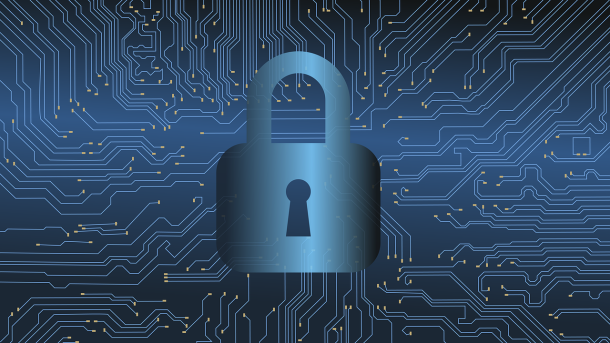In today’s interconnected world, cybersecurity has become a critical concern for individuals, businesses, and governments alike. The rapid proliferation of digital systems and the internet has transformed our lives in countless ways, but it has also brought with it a host of significant cyber threats targeting sensitive data and critical infrastructure. As we navigate this complex digital landscape, understanding and addressing these challenges is paramount to ensuring a secure and resilient future.
The Evolving Cyber Threat Landscape
The cyber threat landscape is in a constant state of flux, with new and sophisticated attack vectors emerging regularly. What began as simple computer viruses has evolved into a complex ecosystem of malware, ransomware, phishing attacks, and advanced persistent threats (APTs). This ever-changing nature of cyber threats requires organizations and individuals to remain vigilant and adaptable in their security measures.
Ransomware and Phishing
Ransomware attacks have seen a dramatic rise in recent years, causing significant financial and operational damage to organizations worldwide. These attacks encrypt a victim’s data, demanding a ransom payment for its release. Similarly, phishing attacks continue to be a prevalent threat, using social engineering tactics to deceive individuals into revealing sensitive information or downloading malicious software.
|
Ransomware Incident |
Year |
Estimated Cost |
Sectors Affected |
|---|---|---|---|
|
WannaCry |
2017 |
$4 billion |
Healthcare, Manufacturing |
|
NotPetya |
2017 |
$10 billion |
Shipping, Pharmaceuticals |
|
REvil (Kaseya) |
2021 |
$70 million |
IT Management |
|
Colonial Pipeline |
2021 |
$4.4 million |
Energy |
The impact of these attacks extends far beyond financial losses, often resulting in operational disruptions, reputational damage, and loss of customer trust. Organizations must implement robust backup systems, regularly update software, and provide comprehensive employee training to mitigate these risks.
Advanced Persistent Threats (APTs)
Advanced Persistent Threats represent a category of sophisticated, long-term cyber campaigns often orchestrated by nation-states or well-funded criminal organizations. These attacks are characterized by their persistence, stealth, and focus on high-value targets such as government agencies, defense contractors, and large corporations.
Notable APT groups and their activities:
- APT29 (Cozy Bear): Attributed to Russian intelligence, known for targeting government and diplomatic entities.
- APT41 (Winnti): Chinese state-sponsored group focusing on intellectual property theft and espionage.
- Lazarus Group: North Korean-linked group infamous for financial cybercrime and destructive attacks.
- Equation Group: Believed to be affiliated with the NSA, known for highly sophisticated malware.
Defending against APTs requires a multi-layered approach, including advanced threat detection systems, regular security assessments, and robust incident response plans.
Internet of Things (IoT) Vulnerabilities
The rapid growth of the Internet of Things has introduced a myriad of new security challenges. As more devices become interconnected, from smart home appliances to industrial control systems, the attack surface for cybercriminals expands exponentially. Unfortunately, security often takes a backseat to functionality and convenience in IoT device development, making these devices prime targets for exploitation.
Common IoT Vulnerabilities
|
IoT Device Type |
Common Vulnerabilities |
Potential Risks |
|---|---|---|
|
Smart Home Devices |
Weak default passwords, Lack of encryption |
Privacy breaches, Unauthorized access |
|
Industrial Sensors |
Outdated firmware, Insecure protocols |
Critical infrastructure disruption |
|
Medical Devices |
Insufficient authentication, Data exposure |
Patient safety risks, Health data theft |
|
Connected Vehicles |
Vulnerable entry points, Lack of segmentation |
Vehicle hijacking, Personal data compromise |
These vulnerabilities can lead to severe consequences, ranging from privacy breaches to large-scale infrastructure disruptions. In extreme cases, compromised IoT devices can be harnessed into massive botnets, capable of launching devastating DDoS attacks.
Strategies for Securing IoT Devices
To enhance IoT security, both manufacturers and users must take proactive measures:
- Implement strong, unique passwords for each device
- Regularly update firmware and software
- Use robust encryption for data transmission
- Segment IoT devices on separate networks
- Conduct regular security audits and vulnerability assessments
- Implement strong authentication mechanisms
- Disable unnecessary features and ports
By adopting these best practices, individuals and organizations can significantly reduce the risks associated with IoT devices and create a more secure connected ecosystem.
Insider Threats

Insider threats represent a unique challenge in cybersecurity, as they involve individuals who already have authorized access to an organization’s systems and data. These threats can be particularly damaging due to the insider’s knowledge of the organization’s vulnerabilities and valuable assets.
Types of Insider Threats
- Malicious Insiders: Employees or contractors who intentionally misuse their access for personal gain or to harm the organization.
- Negligent Insiders: Well-meaning individuals who inadvertently cause security breaches through carelessness or lack of awareness.
- Compromised Insiders: Legitimate users whose credentials have been stolen or compromised by external attackers.
- Third-party Vendors: External partners or suppliers with privileged access who may have weaker security measures.
The impact of insider threats can be severe, ranging from data theft and financial fraud to reputational damage and regulatory non-compliance.
Mitigation Strategies
|
Strategy |
Description |
Benefits |
|---|---|---|
|
Access Control |
Implement principle of least privilege |
Limits potential damage from compromised accounts |
|
User Activity Monitoring |
Deploy tools to track and analyze user behavior |
Early detection of suspicious activities |
|
Data Loss Prevention (DLP) |
Use DLP solutions to prevent unauthorized data exfiltration |
Protects sensitive information from leaving the organization |
|
Regular Security Training |
Conduct ongoing cybersecurity awareness programs |
Reduces risk of accidental insider threats |
|
Background Checks |
Perform thorough vetting of employees and contractors |
Minimizes risk of hiring malicious insiders |
By implementing a combination of these strategies, organizations can significantly reduce the risk and potential impact of insider threats.
Phishing and Social Engineering
Phishing and social engineering attacks continue to be among the most prevalent and successful methods for cybercriminals to gain unauthorized access to systems and data. These attacks exploit human psychology rather than technical vulnerabilities, making them particularly challenging to defend against.
Phishing Techniques
Cybercriminals employ a variety of sophisticated phishing techniques to deceive their targets:
- Spear Phishing: Targeted attacks using personalized information to increase credibility.
- Whaling: Phishing attempts specifically targeting high-level executives or other high-value individuals.
- Clone Phishing: Duplicating legitimate emails with malicious attachments or links.
- Vishing: Voice phishing using phone calls to extract sensitive information.
- Smishing: SMS-based phishing targeting mobile users.
Recent high-profile phishing scams have targeted major corporations, government agencies, and even COVID-19 vaccination efforts, highlighting the persistent nature of this threat.
Prevention Tips
To protect against phishing and social engineering attacks:
- Verify sender identities before responding to requests for sensitive information
- Use multi-factor authentication for all important accounts
- Be cautious of unexpected attachments or links, even from known senders
- Keep software and systems updated to patch known vulnerabilities
- Educate employees on recognizing and reporting suspicious communications
- Implement email filtering and anti-phishing tools
- Regularly conduct simulated phishing exercises to test and improve awareness
By fostering a culture of security awareness and implementing these preventive measures, organizations and individuals can significantly reduce their vulnerability to phishing attacks.
Data Breaches and Privacy Concerns

Data breaches have become increasingly common and severe, compromising personal and sensitive information on an unprecedented scale. These incidents not only cause immediate financial damage but also long-term reputational harm to affected organizations.
Impact of Data Breaches
|
Data Breach |
Year |
Records Exposed |
Type of Data |
|---|---|---|---|
|
Yahoo |
2013-2014 |
3 billion |
Email addresses, passwords |
|
Equifax |
2017 |
147 million |
SSNs, credit card numbers |
|
Marriott |
2018 |
500 million |
Passport numbers, credit cards |
|
|
2019 |
533 million |
Phone numbers, personal details |
The consequences of these breaches extend far beyond the immediate financial impact, often resulting in:
- Identity theft and fraud
- Loss of customer trust and loyalty
- Regulatory fines and legal action
- Operational disruptions and recovery costs
- Long-term reputational damage
Enhancing Data Privacy
To enhance data privacy and mitigate the risk of breaches:
- Implement strong encryption for data at rest and in transit
- Adopt a zero-trust security model
- Regularly conduct security audits and penetration testing
- Comply with data protection regulations (e.g., GDPR, CCPA)
- Implement robust access controls and authentication mechanisms
- Develop and maintain an incident response plan
- Provide ongoing privacy and security training for employees
By prioritizing data privacy and implementing these measures, organizations can better protect sensitive information and maintain the trust of their stakeholders.
Lack of Cybersecurity Awareness and Training
Human error remains a significant factor in many cyber incidents, underscoring the critical importance of cybersecurity awareness and training programs. Organizations must invest in developing a cyber-resilient workforce capable of recognizing and responding to evolving threats.
Importance of Training Programs
Effective cybersecurity training programs can significantly reduce an organization’s risk profile:
|
Training Topic |
Benefits |
|---|---|
|
Phishing Awareness |
Reduces successful phishing attempts |
|
Password Security |
Enhances overall account security |
|
Data Handling |
Prevents accidental data leaks |
|
Social Engineering |
Improves resistance to manipulation tactics |
|
Incident Reporting |
Enables faster response to potential threats |
Regular, engaging, and up-to-date training sessions ensure that employees remain vigilant and equipped to handle emerging cyber threats.
Developing a Cyber-Resilient Workforce
To cultivate a workforce capable of navigating the complex cybersecurity landscape:
- Conduct regular security assessments to identify knowledge gaps
- Tailor training programs to specific roles and responsibilities
- Utilize interactive and scenario-based learning methods
- Encourage a culture of security awareness and open communication
- Provide incentives for identifying and reporting security issues
- Regularly update training content to address emerging threats
- Measure and track the effectiveness of training programs
By investing in comprehensive cybersecurity awareness and training initiatives, organizations can transform their workforce into a powerful line of defense against cyber threats.
In conclusion, addressing the multifaceted challenges of cybersecurity in the digital age requires a holistic approach combining advanced technologies, comprehensive frameworks, and continuous education. By staying informed about evolving threats, implementing robust security measures, and fostering a culture of cybersecurity awareness, we can work towards a more secure and resilient digital future. As cyber threats continue to evolve, so too must our strategies for combating them, ensuring that we remain one step ahead in the ongoing battle for digital security.




